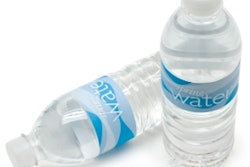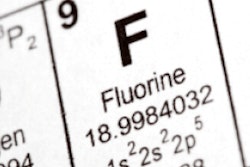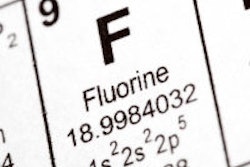
The U.S Department of Health and Human Services (HHS) on April 27 recommended a single level of fluoride of 0.7 mg/L (parts per million [ppm]) to maintain caries prevention benefits and reduce the risk of dental fluorosis in community water systems.
The recommendation replaces the previously recommended range of 0.7 mg/L to 1.2 mg/L, which was issued in 1962. The recommendation was published online and will be in the July-August 2015 issue of Public Health Reports (Vol. 130).
U.S. Surgeon General Vivek Murthy, MD, MBA, noted that community water fluoridation continues to offer substantial protection against tooth decay beyond that provided by other fluoride products. He wrote a perspective published alongside the recommendation.
"The panel's assessment of the best available science concluded that community water fluoridation remains an effective public health strategy for delivering fluoride to prevent tooth decay and is the most feasible and cost-effective strategy for reaching entire communities," Dr. Murthy wrote.
In an HHS press release, the department stated that the change was recommended because Americans have access to more sources of fluoride than when community fluoridation was first introduced. The new recommended level will maintain the protective decay prevention benefits of water fluoridation and reduce the occurrence of dental fluorosis, according to HHS.
The recommendation noted that for children ages 6 months to 14 years, drinking water accounts for 40% to 70% of total fluoride intake; for adults, drinking water provides 60% of total fluoride intake.
"While additional sources of fluoride are more widely used than they were in 1962, the need for community water fluoridation still continues," stated U.S. Deputy Surgeon General Rear Admiral Boris Lushniak, MD, MPH, in the HHS release. "Community water fluoridation continues to reduce tooth decay in children and adults beyond that provided by using only toothpaste and other fluoride-containing products."
 Barbara Gooch, DMD, MPH.
Barbara Gooch, DMD, MPH.Dr. Barbara Gooch, DMD, MPH, told DrBicuspid.com that this recommendation will maintain the caries prevention benefits of fluoride, while reducing the risk of dental fluorosis in younger patients.
"The recommendations were updated because Americans have more access to fluoride, in toothpastes and mouth rinses," Dr. Gooch said. "We have national data that we can maintain the caries prevention benefits at 0.7 ppm while reducing the occurrence of dental fluorosis."
Dr. Gooch is the corresponding author of the recommendation. She is the associate director for science in the division of oral health at the National Center for Chronic Disease Prevention and Health Promotion at the Centers for Disease Control and Prevention in Atlanta.
Practically, communities that adjust fluoride in their community water systems may choose to reduce the amount of fluoride in their water systems, she noted.
"This is a recommendation," she said. "Decisions of this sort are made at the state and local level. We advise that water operators who are considering implementing the new recommendation to first contact their state drinking water administrator."
When asked what she would recommend that general dentists tell their patients, pediatric patients, and parents of their pediatric patients about community water fluoridation and its importance, she said, "We want them to take away that drinking fluoridated water is an important approach in helping their patients reach and maintain optimal oral health."
The updated guidance is intended to apply to community water systems that currently fluoridate, or that will initiate fluoridation, and is based on the following considerations:
- Scientific evidence related to the effectiveness of water fluoridation in caries prevention and control across all age groups
- Fluoride in drinking water as one of several available fluoride sources
- Trends in the prevalence and severity of dental fluorosis
- Current evidence on fluid intake of children across various outdoor air temperatures



















